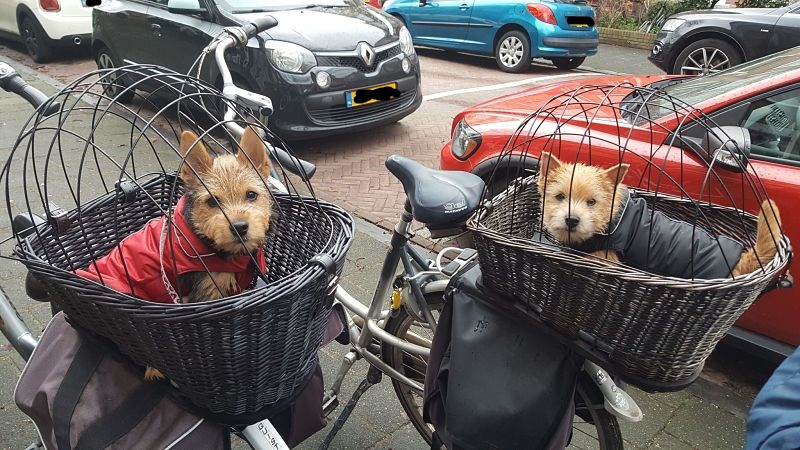We sometimes get a mail in our inbox asking to register 2 pups at once. Instead of filling us with joy, we dread the moment that we’ll have to explain littermate syndrome to the unsuspecting owner.
Littermate syndrome: what is it?
Littermate syndrome is a phenomenon that we often see, whereby littermates who are raised together from puppyhood form such a tight social unit that it limits their willingness and ability to pay attention to much else. This is an issue in many ways:
- Puppies are so pliable at an early age because they depend on you for their survival and thus are primed to try to please us more. Littermates, on the otherhand, can already behave like adolescent dogs in that regard. They feel confident enough thanks to each other’s support that they have less of a need to want to avoid displeasing you in the crucial first few weeks.
- Littermates can pay less attention to their social and non-social surroundings because, again, their littermate provides all the close social interactions and adventures they need. If they do explore something together (b.v. they are using a lift or stairs for the first time), they haven’t learnt to deal with it alone. This means that they will behave as though they’d never seen a lift before if you try exposing them separately.
- Littermates can be torn apart if and when something happens to their brother or sister that forces them to be separated.
What can you do?
The advice we give with littermates is: don’t. Unless you want to invest 5x as much work in raising them into happy, well-behaved dogs.
If you do proceed, then we advise that you:

- Run through the socialisation checklist with each dogs separately, and also with them together. That’s quite a few tram rides and trips to the dog park if you ask me.
- Enroll the dogs in separate obedience classes. If that is not possible, then have them stand at opposite ends of the class without being able to see each other.
- Precede your obedience requests with
- “Doggies” or whatever you’re comfortable calling your duo for requests addressed to both dogs; and
- “Dog 1” / “Dog 2” (insert the individual dog’s names here instead of Dog 1/2) for requests addressed to only one dog
- And teach them to ignore requests that weren’t addressed to them.
You hear of littermate syndrome, you have 3 choices
When we tell you about littermate syndrome, please don’t shoot the messenger. You have three choices:
- You can back-track on your commitment to get a second pup from the litter, if it’s not too late to do so. You can also send the breeder some information about littermate syndrome in the hope they won’t try to flog more of them to unsuspecting owners in the future.
- You can take it personally and trivialise the issue when you hear about it. You can decide to feel insulted and go to another training school which might give you the “two-fer” deal on lessons that you were asking about.
- And then we have the knowledgeable owners who are aware of the issue, and take their responsibilities. These are the guys who send us pictures of their work with each dog separately, and with both dogs together. Guys who bring their socialisation checklist week in, week out. Guys who listen to the advice they get and get it done. We can’t get enough of these guys!
Meet these two cute Norwich terrier littermates that are following lessons at OhMyDog!

